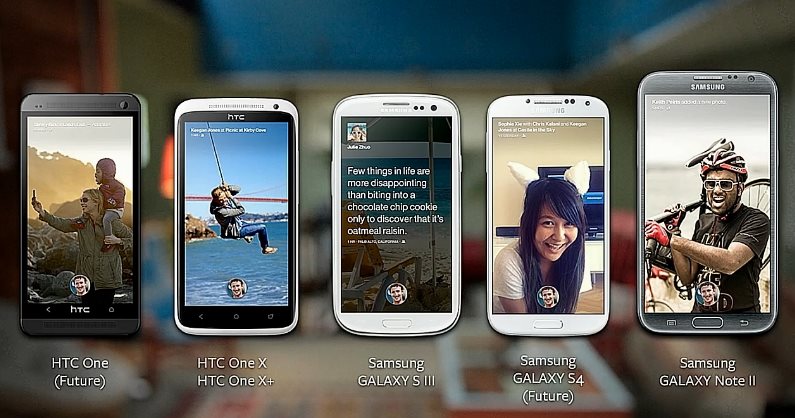
MENLO PARK, Calif. — Facebook has just unveiled Home, a beautiful new skin for Android phones. It’s gorgeous and comes with tons of innovative new features, but it just might be the death knell for developers whose Android apps don’t integrate with any of Facebook’s APIs.
Granted, the dang thing just was announced today and hasn’t even launched yet to the general public. But if it gains any significant traction, it stands to hurt developers who build for Android but not for Facebook.
“The result of their action is that some app developers are going to not be a part of the equation,” said Gartner research director Brian Blau during a chat at today’s event.
“If Home becomes popular — and that’s a big if — and those developers don’t use Facebook APIs, they’re going to lose out.”
In a word, the new Home interface is a rich overlay for the Android OS that puts all the device’s applications into a tidy drawer — basically, the typical Android app drawer, alphabetically organized as usual. But without the typical homescreen(s) and the “hotseat” bar of apps along the bottom of the screen, there are just fewer paths and more clicks between users and apps. And those little roadblocks add up.
“This puts those apps at a disadvantage to any of the features of functions Facebook is going to prioritize in the Home interface,” Blau.
“Home looks like an OS and acts like an operating system, but it’s not. It will still tend to take over your device. … all of a sudden, that is the primary interface. And that can’t be good for Google or for non-Facebook Android developers.”
Google has released friendly statements about today’s news, calling Home “a win for users who want a customized Facebook experience.” We’re still waiting to hear what the Android overseers will say about Home’s implications for Android third-party devs.
Notifications for non-Facebook apps will still appear on the homescreen of a user’s Home-running device; notifications will be prioritized by Facebook by their importance and timeliness. But if the user wants to get to your app any other way, she’ll have to swipe from the homescreen to the app drawer. Facebook reps say users will be able to customize the order of apps in the app launcher.
Right now, the homescreen contains a minimal number of options: You can swipe to go to Facebook, to Facebook Messages, or to the app drawer. A Facebook rep said an option for Facebook Photos is coming soon. And in that kind of UI, Facebook-integrated apps have a distinct advantage.
“They’re going to set up a way that gives apps of any type an advantage if they integrate Facebook Connect or Open Graph,” said Blau. “They haven’t announced an API for Home yet, but you can imagine that they could extend that functionality.”
As Facebook CEO Mark Zuckerberg stated directly during today’s announcements, Facebook has no plans now or in the future to build its own fork of Android. “But I don’t think they need that to accomplish their goal,” said Blau.
“If you believe that personalization is a better user experience than the canned UI you get with BlackBerry or Windows Phone, then clearly Facebook is going to win. … The social context means every time you open it, it looks very different.”
So while Facebook moves the standard for mobile UIs forward a couple notch, it pushes developers by hook or by crook into wanting and needing Facebook integration. We’ve been hearing the social company say for years that it intends to become the very best distribution platform for mobile developers; today’s move seems like it’s turning that promise into a threat for some.

